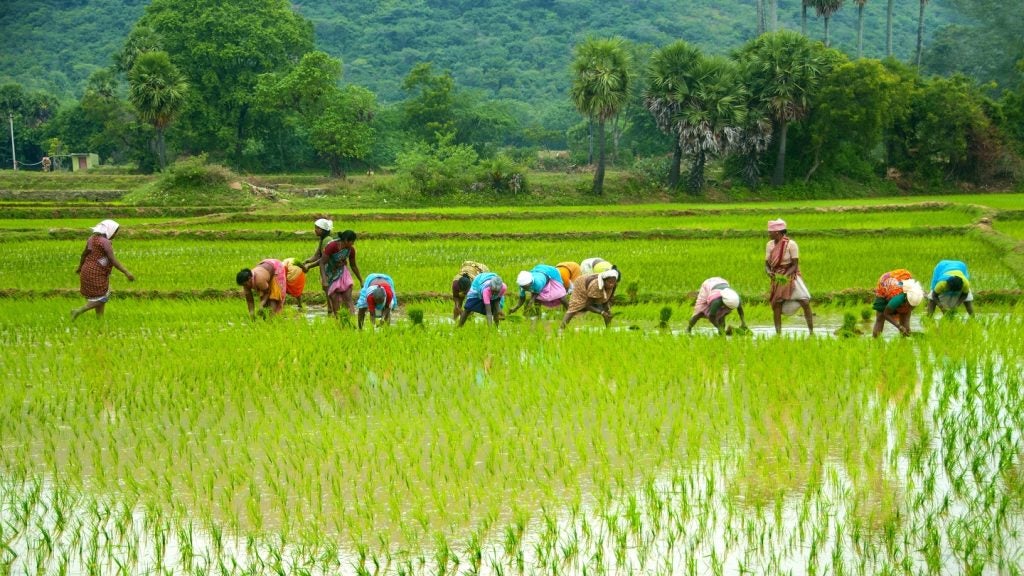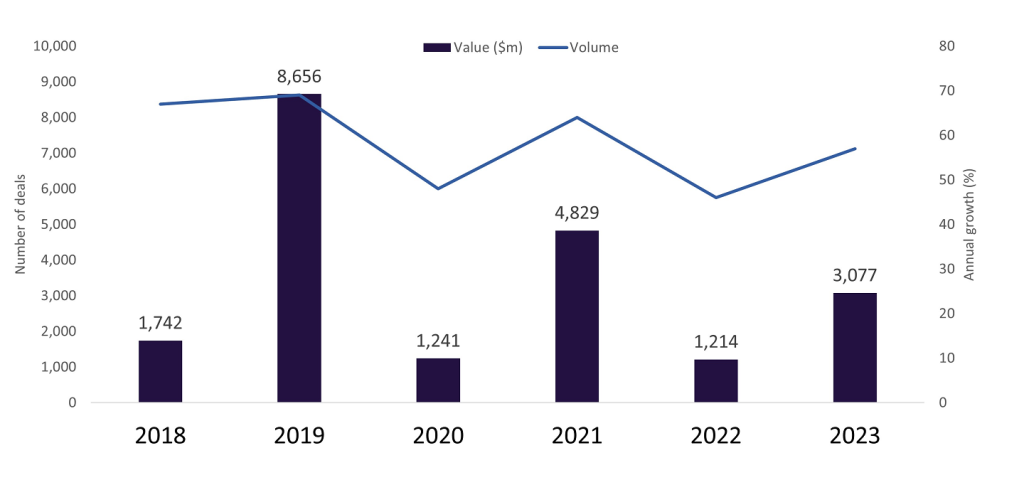Industry Overview
The Serbian insurance industry grew at a CAGR of 4.2%, from 2008 to to value RSD61.5 billion (US$698.5 million) in 2012. This growth was recorded during the country’s economic decline triggered by the eurozone debt crisis. The growth was primarily contributed to by high levels of foreign investment following the liberalization of the industry in 2006.
The industry by the end of 2012 comprised 28 operational companies. Of these, 21 were foreign owned and seven were domestically owned. The growth of foreign investors in Serbia followed the industry’s liberalization in 2006. Foreign insurers entered the industry through greenfield investments, which made the industry highly competitive. The five leading companies collectively accounted for 77.3% of the industry’s total written premiums in 2012.
Industry growth was primarily driven by the life and non-life segments. The life segment represented an industry share of 19.3% in written premium terms and registered the highest CAGR of 16.9% between 2008 and 2012. In contrast, the non-life segment, which accounted for 70.5% of the industry’s written premium, registered a CAGR of 1.6%, while the personal accident and health segment posted a CAGR of 4.8% in the same period.
The life segment grew due to structural changes, and the participation of foreign insurance companies brought a range of new products into the segment. However, the country’s reformed banking sector left minimal scope for complex insurance products which reduced the demand for products such as term-life and general annuity. Instead, individual life, endowment and supplementary products recorded substantial growth which led to an increase in the segment’s written premium contribution from 12.2% in 2008 to 19.3% in 2012. Growth is expected to continue due to the country’s aging population and upcoming pension reforms. This is anticipated to increase the segment’s written premium share to 27.4% in 2017.
The non-life segment, which displayed marginal growth from 2008 to 2012, was the largest contributor to the industry’s written premiums in 2012. Led by motor insurance, the liability insurance category registered the fastest growth in the segment. This was primarily due to compulsory liability liabilities for a large number of classes such as aviation, marine, pharmaceutical products and travel and tourism agents. Compulsory motor liability liability cover contributed to the motor insurance category, although a slowdown in automobile sales in the eurozone affected its growth and caused a CAGR of 1.1%. However, as the eurozone markets show signs of recovery, the motor insurance category is anticipated to recover.
The personal accident and health segment was the smallest in the industry but remained stable in terms of its contribution to the industry’s written premium. The personal accident category was the leading category, due to a large number of accidents and high crime rates. The travel insurance category displayed robust growth as its written premiums rose from RSD12.5 million (US$0.2 million) in 2008 to RSD1.25 billion (US$14.2 million) in 2012 recording a CAGR of 216.3%. In 2013, the travel and tourism sector contributed 5.7% towards country’s GDP, compared to 1.8% in 2011. This was due to the opening up of the sector in 2010 following the Serbian War.
The Serbian insurance industry faces a number of challenges such as high crime rates, alleged corruption, economic slowdown and the eurozone debt crisis. Government support measures, such as subsidized agricultural insurance premiums, amendments to the insurance law and tax relief for pension products, are all expected to contribute towards industry growth. Other factors, such as compulsory classes of insurance, an aging population and exposure to the EU are expected to lead the industry to post a CAGR of 6.5%, to value RSD84.1 billion (US$880.0 million) by 2017.
Industry Size
The industry’s written premium increased from RSD52.2 billion (US$936.5 million) in 2008 to RSD61.5 billion (US$698.5 million) in 2012, at a CAGR of 4.2%.
The life segment accounted for 19.3% of the industry’s written premium in 2012. The written premium of the segment valued RSD11.9 billion (US$134.7 million) in 2012, after recording a CAGR of 16.9%.
The non-life insurance segment accounted for 70.5% of the industry’s written premium in 2012. The written premium of the segment increased from RSD40.6 billion (US$729.2 million) in 2008 to RSD43.3 billion (US$492.4 million) in 2012, at a CAGR of 1.6%.
The personal accident and health insurance segment accounted for 10.2% of the overall insurance industry’s written premium in 2012, with a value of RSD6.3 billion (US$71.3 million). This segment recorded a CAGR of 4.8%.
Life Insurance growth by category
The written premium of the life segment increased from RSD6.3 billion (US$113.9 million) in 2008 to RSD11.9 billion (US$134.7 million) in 2012, at a CAGR of 16.9%. The endowment category accounted for 69.7% of the segment’s total written premiums in 2012, with a value of RSD8.3 billion (US$93.9 million), while the term life category recorded a written premium of RSD1.3 billion (US$15.0 million) in 2012.
Endowment insurance is expected to retain its position as the largest category in the life insurance segment up to 2017, with an expected written premium of RSD16.4 billion (US$171.3 million) in 2017, representing CAGR of 14.6%. The supplementary category is expected to be the second-largest, with a written premium of RSD1.0 billion (US$18.3 million) in 2017.
How well do you really know your competitors?
Access the most comprehensive Company Profiles on the market, powered by GlobalData. Save hours of research. Gain competitive edge.

Thank you!
Your download email will arrive shortly
Not ready to buy yet? Download a free sample
We are confident about the unique quality of our Company Profiles. However, we want you to make the most beneficial decision for your business, so we offer a free sample that you can download by submitting the below form
By GlobalDataKey Industry Trends and Drivers
The key drivers for the Serbian insurance segment are:
Subsidizing premiums for agriculture to increase the demand for agriculture insurance
Serbia’s agricultural sector is projected to contribute 7.6% to the GDP in 2012. Moreover, crops and food exports are the country’s second-largest export sectors after rolled iron and steel products. The sector is attracting foreign direct investment (FDI). This was evident when the FDI in the sector by the end of 2012 stood above EUR2.6 billion (US$33.4 billion).
Agriculture insurance is used only by large professional agriculture producers and companies and not small farmers. According to government estimates, 2 million Serbians depend on the agriculture sector for employment of which approximately only 450,000 estate owners had agriculture insurance. Therefore, to protect farmers’ interests, the government framed a new law in April 2012, under which it will subsidize farmers’ investments in the production and distribution of fruit, vegetables and flowers. In addition, the government will provide a 40% subsidy on crop and livestock insurance. The reduction in premiums is expected to drive insurance penetration.
Regulatory changes to bring reforms in the industry
Serbia’s regulatory environment has changed significantly since 2005 when foreign investors entered Serbia through greenfield investments. Since then, a number of regulatory changes have been made. The Serbian Finance Minister stated that during January 2014 insurance laws would be amended with effect from mid-2014. The amendments include compliance obligations for joining the World Bank project targeting reinsurance against natural disasters and catastrophic risks. Regulations are expected to become increasingly stringent due to the regulator’s proposal to comply with EU directives and adopt Solvency II legislation following Serbia’s accession to the EU. This will increase capital requirements and improve transparency levels.
Foreign industry participation to drive industry growth
The Serbian insurance industry is dominated by foreign insurance companies. As of June 2013, there were 28 operational insurance and reinsurance companies in Serbia, of which 21 were primarily foreign-owned. Foreign invested companies accounted for 89.9% of the life and 57.2% of the non-life insurance written premiums in June 2013. This is primarily due to Serbia’s strategic location in south-east Europe, its flexible tax systems, and accessibility to Russian markets. The share of foreign insurers in the industry is expected to increase, creating competition among insurers and supporting industry growth.
Anticipated liberalization of reinsurers to support growth
The Serbian insurance industry comprises four reinsurers: Dunav Re, Wiener Re, Delta Generali Re and DDOR Re. This is due to prevailing legislation according to which reinsurance can only be transacted through authorized domestic reinsurers. Consequently, insurers who seek international reinsurance need to do so either by ceding premiums to a domestic insurer, or by developing their own subsidiaries for reinsurance. However, the adoption of amendments to the insurance law which include provisions for entire catastrophic risk of insurers be ceded to reinsurers and extension for deadline of submitting appropriate evidence by composite insurers of harmonized business activities is expected to liberalize the Serbian reinsurance segment .
Opening of the travel and tourism sector to support travel insurance
The travel insurance category displayed robust growth and its written premiums rose from RSD12.5 million (US$0.2 million) in 2008 to RSD1.25 billion (US$14.2 million) in 2012. In 2013, the industry contributed 5.7% towards the country’s GDP, as compared to 1.8% in 2011. This was due to the opening up of the travel and tourism sector in 2010.
Recent Developments
NBS gives nod for MetLife’s life insurance portfolio transfer
27 January, 2014
The National Bank of Serbia (NBS) has given approval to MetLife for the transfer of a part of its life insurance operations to the joint-stock insurance company Wiener Städtische osiguranje.
The transfer of life insurance portfolio will be effected as at 31 December 2013.
MetLife’s portfolio portion that is under consideration includes rights and obligations arising from long-term endowment (mixed life insurance) and pure endowment insurance contracts.
It also comprises supplemental insurance contracts as well as reserves and liabilities concerning to valid and terminated endowment and pure endowment insurance plans.
Following the receipt of the approval, Wiener Städtische osiguranje has 30 days to conclude new contracts with the hitherto insureds of Metlife who accepted the transfer.







